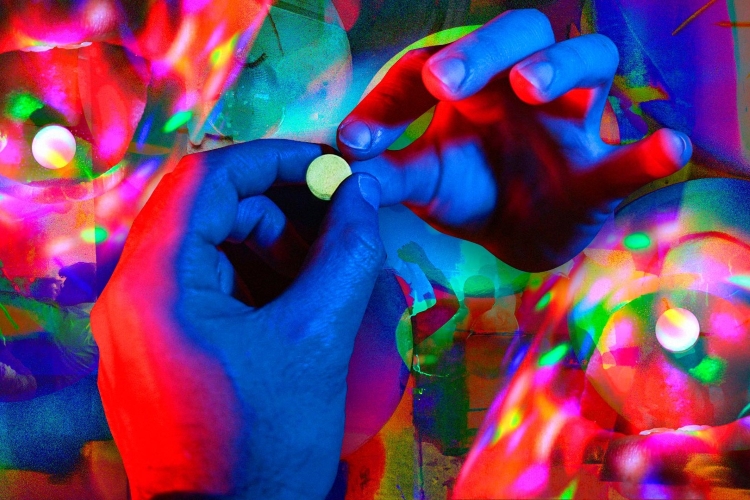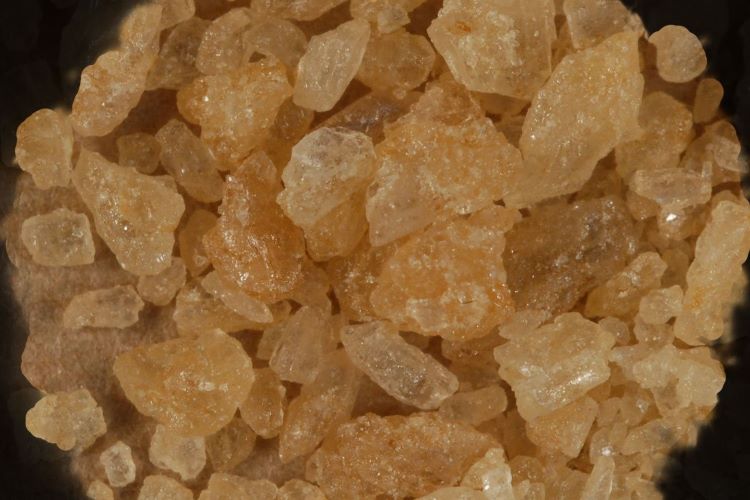
What is an MDMA Experience Like?
Table of Contents
MDMA – The Party Drug Grows Up
You’re on the dance floor and your heartbeat begins to race. Every time your skin brushes up against someone else’s, the sensation is electrifying. Waves of happiness wash over you. And you soon begin to notice an increased feeling of connection and openness with the people around you. MDMA first became popular through 1990’s club culture. It remains a staple for partygoers across the world, and increasingly is a pathway for couples and friends looking to deepen their relationships. While MDMA is illegal in most countries, new research on its therapeutic uses is quickly leading to greater acceptance. Intrigued? Below we’re going to explore in greater detail exactly what an MDMA experience is like as well as how it stacks up against other psychedelics.
What is an MDMA Experience Like?
MDMA experiences include blissful effects like euphoria, increased energy and alertness, and increased empathy. Consumers cite increased sensory perception, a rapid heartbeat and reduced anxiety. But this is probably best understood through anecdotal evidence.
Like most of us, Rachel Nuwer felt very lonely during the height of the COVID-19 pandemic. She decided to take MDMA with her husband and one of their friends to break up the monotony. This was her experience:
“Paul, Ty, and I spent the next several hours dancing like maniacs on the living room carpet. Hugging and laughing and belting out lyrics. Near the peak of the experience I had a simple but profound realization: I was not alone at all—none of us were. I began to feel an almost painful sense of compassion and empathy for those whose lives had been lost due COVID-19, and for their loved ones left behind.”

Similarly, a recreational user in Britain explained that MDMA “gives you a deep sense of connection to your friends. It’s beyond that which you can get when you meet them for dinner and they moan about their jobs”.
Another user, participating in a clinical trial evaluating the efficacy of MDMA in treating PTSD, was quoted as saying “I understand what joy is now”. He then reported that following his experience, he was seeing life as “a thing to be explored and appreciated rather than something to be endured”.
However, one user we spoke with who took just a small amount of MDMA experienced only anxiousness. Examples like this act as a reminder that exclusively negative effects are also possible; different people will react to MDMA differently. Nevertheless, most people who take the recommended dose of MDMA report overwhelmingly positive experiences.
How Long Does an MDMA Experience Last?
Usually, the effects of MDMA can be felt for around three to six hours. However, many users take more than one dose in a single session. This is not recommended, as it may lead to overdose, or less serious but still unpleasant side effects.

How is an MDMA Experience Different From Other Psychedelics?
MDMA is primarily a stimulant; its effects are far less psychedelic than other substances such as ayahuasca, psilocybin, and 5-MeO-DMT. That said, it does have mild psychedelic effects. Let’s take a look at how it stacks up against a few other psychedelics.
MDMA vs. Ayahuasca
The effects of MDMA typically start kicking in 20-30 minutes after consumption. The ‘come up’ can be quite stimulating. Effects at that time may include tachycardia, tightness in the jaw, and anxiety (which usually fades away). Ayahuasca has a similar onset time of around 30–60 minutes. Its effects also last four to six hours, which is roughly as long as an MDMA experience. However, the initial effects are much less pleasant and involve purging, or intense vomiting and diarrhea, a cathartic part of the experience. Both substances typically beget a rather intense experience. But most ayahuasca experiences would be described as ‘more intense’ than most MDMA experiences, as ayahuasca is a much more potent psychedelic and hallucinogen. Accordingly, it has much more of a capacity to alter one’s perception of reality.
Both ayahuasca and MDMA may be useful in working through traumas. Many ayahuasca are centered around the surfacing of, and dealing with, past traumas. Similarly, MDMA is being used in clinical settings to explore the trauma that traps PTSD sufferers in their condition. In fact, MDMA has been shown to be extremely effective in lessening and even eliminating PTSD when taken in this context.
These substances do come with some risks, but the risks are distinct. The overuse of MDMA can lead to tolerance, dependence, withdrawal, and problems with serotonin levels and motivation. The risks of taking ayahuasca are more psychological. Users who do not properly integrate their experiences can suffer new or worsening mental health challenges. There are also certain drugs that are contraindicated when using MDMA, and others that are contraindicated when using ayahuasca. Users of MAOIs, in particular, shouldn’t take either MDMA or ayahuasca.
MDMA vs. Psilocybin
Psilocybin’s onset time varies more than that of MDMA. It can take as little as ten minutes, or as long as one hour, for users to feel the effect. The length of the trips are quite similar, typically lasting from 4 – 6 hours. Psilocybin and MDMA both alter perception, creating more intense sensory experiences and vivid colors. On the emotional side of things, both substances can induce feelings of euphoria and increased connection to others. But psilocybin presents a much wider range of possible emotions you might feel, ranging from happy to scared to reflective and everywhere in between. A psilocybin experience is much more variable and unpredictable than an MDMA experience. Both can be very intense. Typical dosages of psilocybin vary widely between users, which means that comparative intensity is primarily dose-dependent.
Psilocybin has far less potential for addiction, tolerance, and dependence than MDMA. However, it comes with its own set of risks. Some users may experience ‘bad trips’, or disturbing hallucinations accompanied by panic and/or other strong negative emotions. Additionally, anyone with heart problems should not take either psilocybin or MDMA.
MDMA vs. 5-MeO-DMT
Like MDMA, 5-MeO-DMT alters perception and leads to changes in visual and sensory experiences. Both are also known to induce changes in body temperature and heart rate. However, the similarities end there; broadly speaking, comparing MDMA to 5-MeO-DMT is like comparing apples to oranges. MDMA consumers are generally aware of their surroundings throughout the experience. 5-MeO-DMT brings on such a strong hallucinogenic experience that most users are completely detached from reality during their trips. One user even described the experience as “being catapulted headfirst into another dimension”. 5-MeO-DMT often brings about breakthrough experiences in which one’s ego ‘dissolves.’ The consumer experiences a profound sense of unity with a higher power and the universe. As with 5-MeO, MDMA also creates connection between people. However, the intensity of this feeling is not comparable, and one’s sense of self remains intact throughout an MDMA experience.
Onset time and duration also differ. 5-MeO-DMT can be felt just a few minutes after ingestion and runs its course much more quickly (up to about 45 minutes maximum), whereas MDMA’s effects take longer to set in. Although it produces a much more intense experience, 5-MeO-DMT is safer than MDMA, as it carries little to no risk of addiction.
So what is an MDMA experience like?
MDMA is, on the whole, quite different than the other substances explored above. Recreational users should be cautious when it comes to dosing. They should take great care to ensure that they’re truly receiving pure MDMA. And they should also be mindful of the frequency of use, as there is such a thing as too often with MDMA. However, it shows great promise as an alternative therapy in the treatment of PTSD and other mental health conditions. As always, we advocate for safe, well-informed psychedelic use. Make sure you have checked to see if any medications your are taking are contraindicated. Start with a small dose and see how you respond. And definitely investigate legal treatment options, or participation in clinical trials, if you’re as hopeful about its therapeutic potential as we are.

Comments